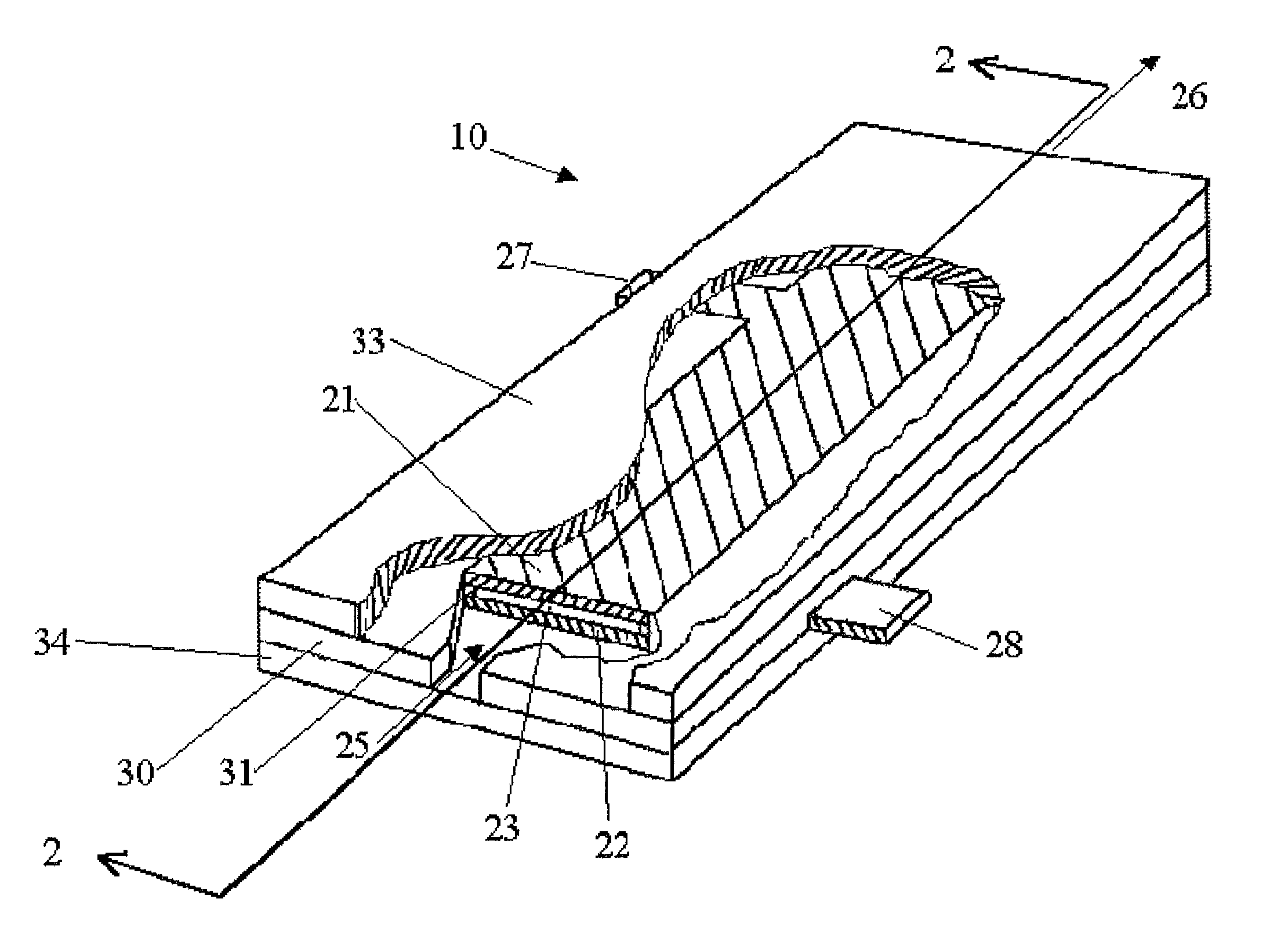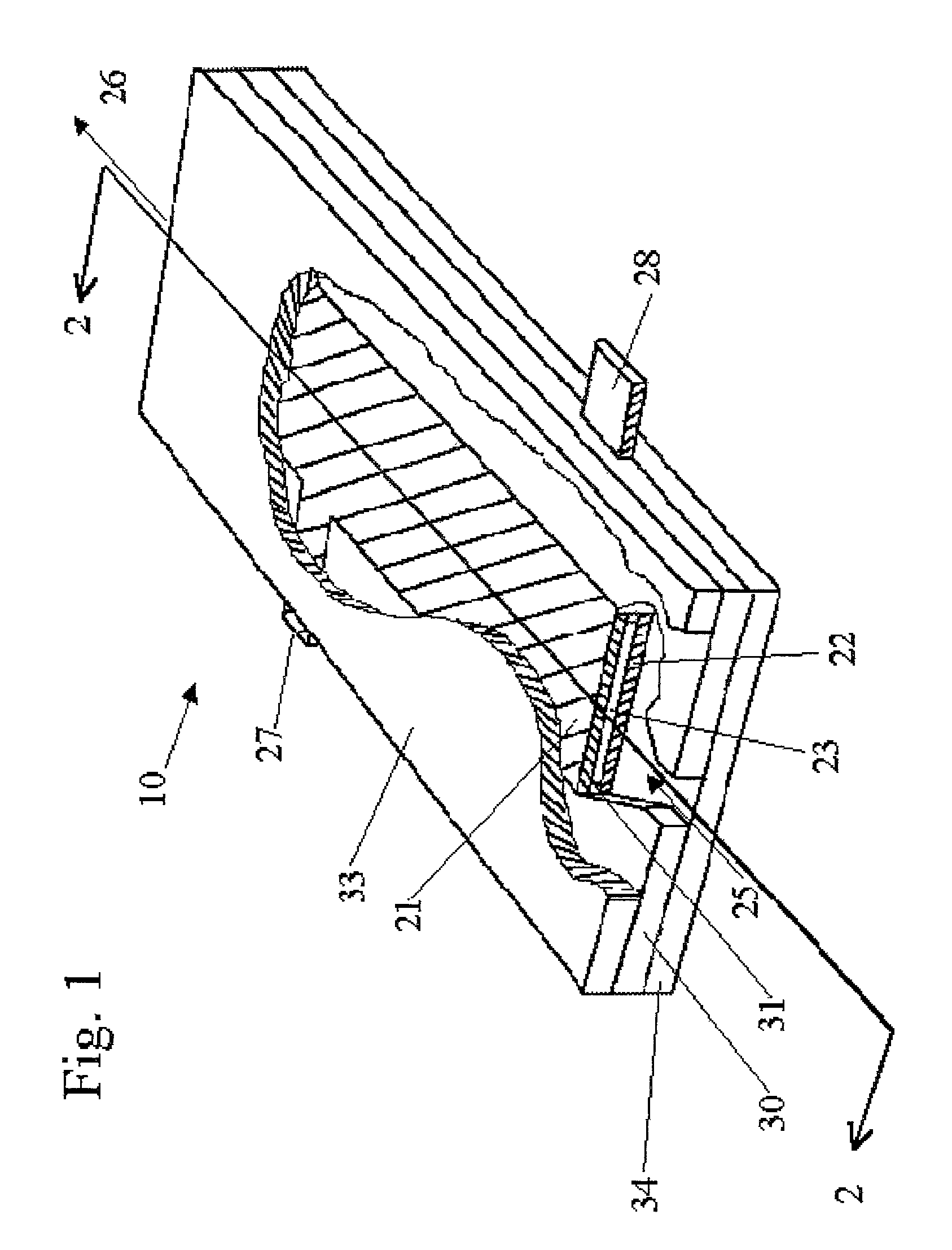Electrolysis cell for generating chlorine dioxide
- Summary
- Abstract
- Description
- Claims
- Application Information
AI Technical Summary
Benefits of technology
Problems solved by technology
Method used
Image
Examples
example 1
[0099]An electrolysis cell of the general design shown in FIG. 1 was used to convert an aqueous solution comprising sodium chlorite into an effluent solution comprising chlorine dioxide. The electrolysis cell had a pair of confronting electrodes having a passage gap of about 0.19 mm. The anode was made of ES300—titanium, coated with ruthenium oxide and iridium oxide. The cathode was made of 201 stainless steel. The dimensions of the planar electrodes were 75.2 mm long by 25.4 mm wide.
[0100]The aqueous feed solution was prepared by mixing 10 liters of de-ionized water with 62.6 gms technical grade sodium chlorite stock (80% active, Aldrich Chemical Company, Inc, Milwaukee, Wis. 53233; Cat. No. 24415-5) with a stirring bar until dissolved, forming a 5000 ppm sodium chlorite salt solution. The aqueous feed solution was retained in a 15-liter glass container placed within a light-proof box and cooled to 5 degrees Celsius. A peristaltic pump metered the aqueous feed solution from the gla...
example 2
[0101]The electrolysis cell of Example 1 was operated using an aqueous feed solution of 445 ppm of sodium chlorite stock (80% active) in 1 liter of de-ionized water, to provide a concentration of chlorite ion of 266 ppm. The effluent was re-circulated to the 1.5-liter glass container, which was open to the air in a laboratory hood. The flow rate was set at 200 ml / min. A voltage potential of 5.0 volts was provided across the electrolysis cell at a current of 1.7 amps. Aliquot samples of the aqueous feed solution were taken periodically to monitor the conversion of the sodium chlorite, and the levels of chlorine dioxide and sodium chlorite were measured and recorded at the time intervals shown in Table A.
[0102]
TABLE ATimeChlorine DioxideChlorite ionConversion 5 min 7.6 ppm258 ppm2.9%10 min15.9 ppm250 ppm6.0%15 min18.9 ppm247 ppm7.1%18 min19.7 ppm246 ppm7.4%
example 3
[0103]The electrolysis cell of the general design shown in FIG. 1 was operated with an aqueous feed solution containing 1000 ppm chlorite ion, prepared by mixing 1676 ppm of sodium chlorite (80% active stock) in 50 liters of de-ionized water within an open polypropylene container. The electrolysis cell had a pair of confronting electrodes, each 100 mm long by 60 mm wide and having a passage gap of about 0.45 mm. A voltage potential of 7.5 volts was provided across the electrolysis cell at a current of 15.0 amps. The outlet of the electrolysis cell was re-circulated back to the container. The pump speed was adjusted to pass the solution through the cell at 4.2 liter / min. The system was operated for fifty minutes. The effluent was periodically sampled and analyzed to monitor the levels of chlorine dioxide and the sodium chlorite, at the time intervals and with the results shown in Table B.
[0104]
TABLE BTimeChlorine DioxideChlorite ionConversion10 min14.0 ppm986 ppm1.4%25 min28.9 ppm971...
PUM
| Property | Measurement | Unit |
|---|---|---|
| Length | aaaaa | aaaaa |
| Fraction | aaaaa | aaaaa |
| Fraction | aaaaa | aaaaa |
Abstract
Description
Claims
Application Information
 Login to View More
Login to View More - R&D
- Intellectual Property
- Life Sciences
- Materials
- Tech Scout
- Unparalleled Data Quality
- Higher Quality Content
- 60% Fewer Hallucinations
Browse by: Latest US Patents, China's latest patents, Technical Efficacy Thesaurus, Application Domain, Technology Topic, Popular Technical Reports.
© 2025 PatSnap. All rights reserved.Legal|Privacy policy|Modern Slavery Act Transparency Statement|Sitemap|About US| Contact US: help@patsnap.com



